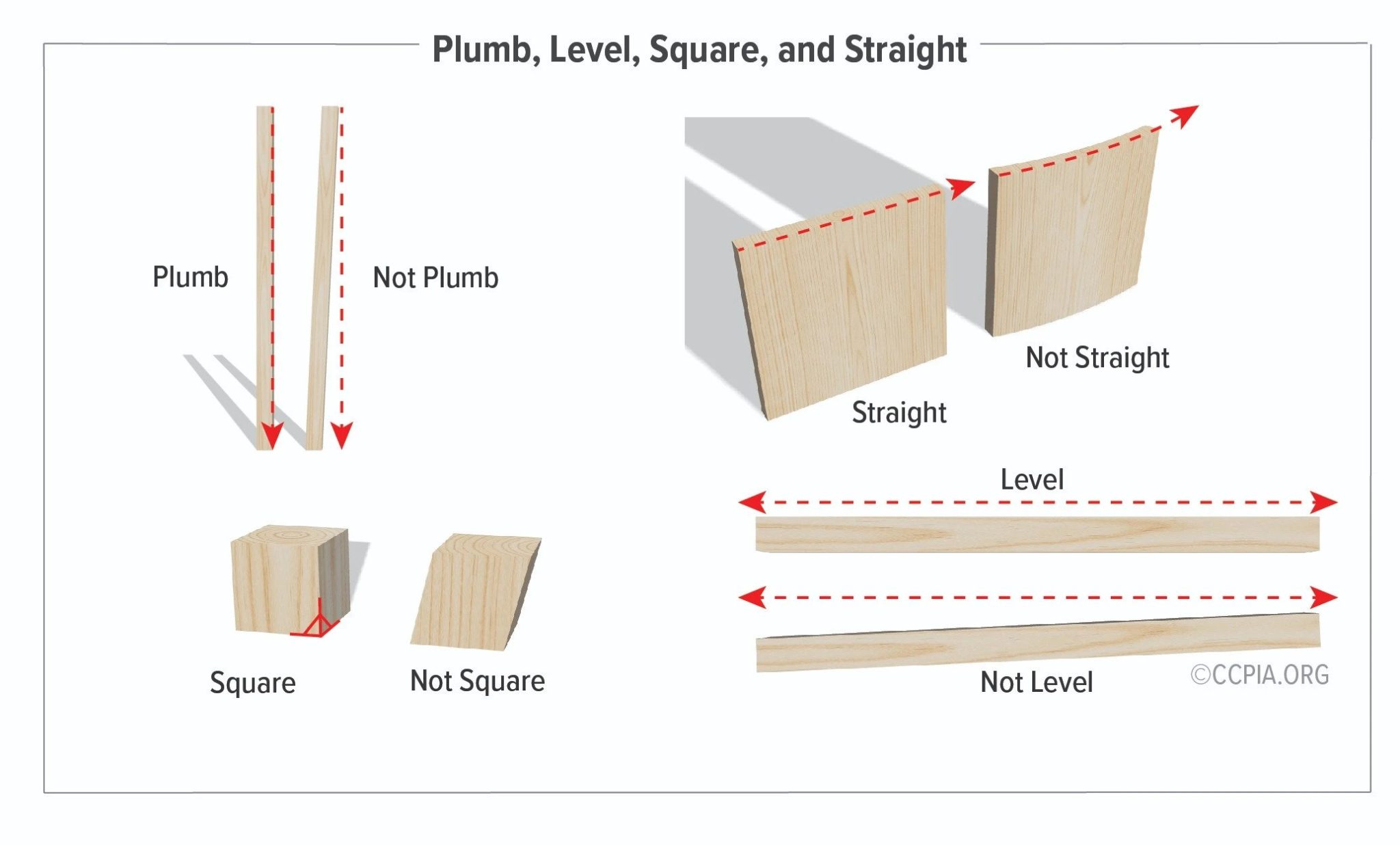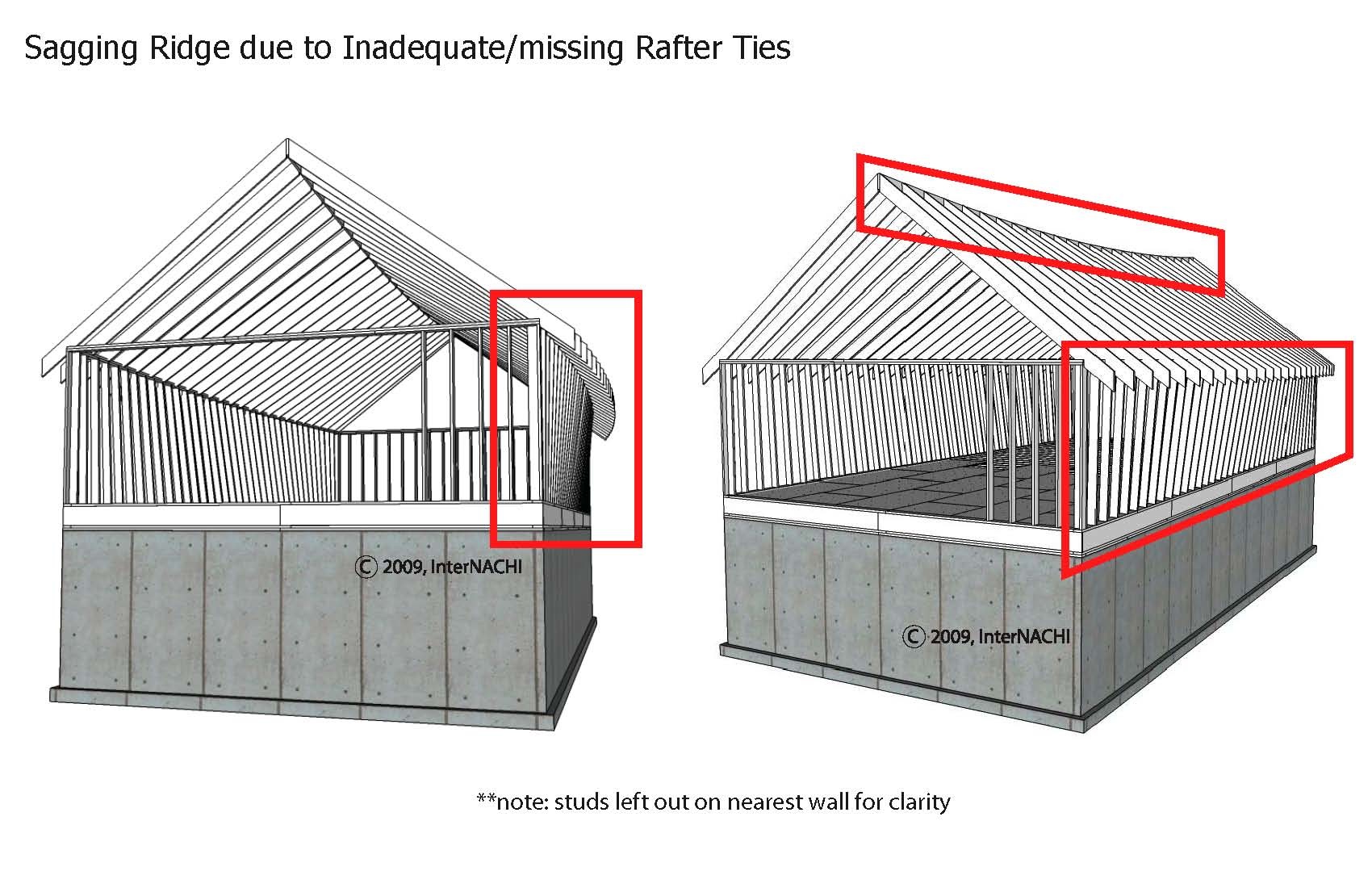There are very few constants in construction or inspections, but one basic construction principle is that buildings should be plumb, level, square and straight (PLSS). In inspecting a structure, anything that deviates from this would be considered an issue or defect. Many inspectors are not structural engineers or architects, and a commercial property inspector is not required to perform engineering services or calculations; therefore, an inspector’s role is to visually detect such issues, and understanding the common construction terms aid in communicating deviations to clients.

Plumb, Level, Square, and Straight
Plumb
Plumb is the vertical condition of a component. If something is leaning, it is described as being out of plumb. A common approach to assessing a building’s structure is to view it from a distance. This approach is referred to as the “macro view.” Hence, view the whole building instead of looking at it in close proximity. The latter is referred to as the “micro view.” Each approach is beneficial in certain instances.
While looking at a building through the macro approach, an inspector should look at all exterior corners to identify plumb issues, such as leaning walls, columns at entryways and parking areas, and posts on decks and balconies. Any variations could be indications of movement or the potential for structural problems. Commercial property inspectors may look further into the structure to identify the root of the problem, or there may be times when it cannot be determined, in which case the inspector would report the condition as out of plumb.
Level
If plumb is the vertical plane, then the level is the horizontal plane. To state that something is level is to say that it is flat, without bumps or slopes. Hence, buildings are not designed or built with floors that are sloped or humped. Instead, floors are constructed to be level.
Walking across a floor or looking at the horizontal components will help identify issues with the levelness of a building. Although the ComSOP doesn’t require special equipment, one could use a bar, bubble level, laser level or water level to help deduce unevenness. Or one could use a golf ball. The golf ball will roll across a floor and settle or roll toward the lowest spot. If a floor is level, the golf ball will not move, or it will only slightly move.
Square
Another principle of construction is square. The internal corners are vertically and horizontally even for something to be square and exhibit 90-degree angles, such as the intersection of walls and floors. If a wall is out of square, the wall would appear slanted inward or outward depending, on where it is viewed.
Square walls can transfer loads downward to where it is supported. If a wall is not square or if it’s leaning, the load at the top could cause the wall to increasingly lean and potentially collapse. Another condition of out-of-square elements found during an inspection is an out-of-plumb door frame. This may also be a general indication of foundation movement.
Straight
If plumb is vertical, level is horizontal, and straight is the intersection between plumb and level, then straight is the hybrid of these principles. Essentially, straight is a condition where something is not curved or bent.
Straight is visually identified through the “macro” approach and sighting down a wall. When sighting downward, the wall might appear plumb yet curved in and out like a snake. Hence, the wall is not straight and should be described in the inspection report.

The image above is an excellent example of how plumb, level, square, and straight. The sag in the ridge shows that it no longer level. The bow and tilt in the exterior wall show that it is no longer plumb or straight. The push at the ceiling where the wall and the roof intersect the exterior wall produces a corner that is no longer square.
Conclusion
Reviewing the structure of a building is like attending a symphony. The music is perfect when all the instruments and musicians play the same tune. However, if one instrument or musician were a note or two off or slightly out of tune, the music wouldn’t be as enjoyable.
The same is true for a structure. If the building is plumb, level, square and straight, then the likelihood of the building being sound is very high. If there are issues with any of these principles, then there will be a high likelihood of structural issues being present, causing you to either further investigate or recommend an additional thorough investigation in your inspection report.
Article Written By: Rob Claus, CMI®
Additional Resources for Commercial Property Inspectors:


